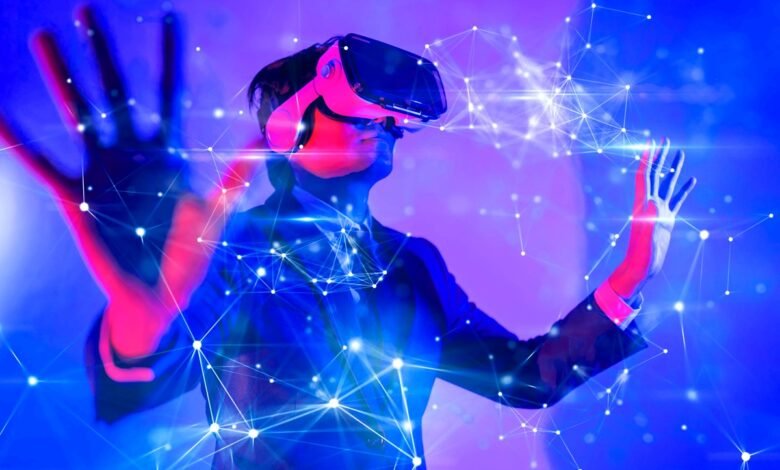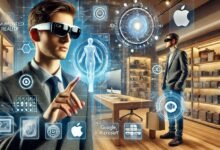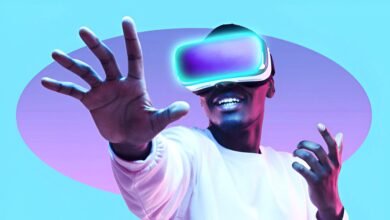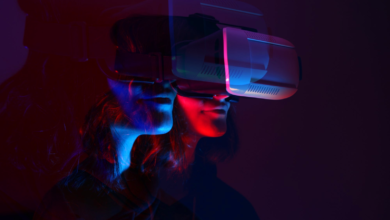3 Common Myths About The Metaverse
We expect that you are prepared to participate in a metaverse examination today. However, there is no need for concern; the questions are not as challenging as they may appear.

We expect that you are prepared to participate in a metaverse examination today. However, there is no need for concern; the questions are not as challenging as they may appear.
Each new technology that emerges generates its own narrative and applications. and, of course, its own uncertainties. Every time we discuss a new concept or technological advancement, question marks accompany it. Is it a phase that will eventually pass? Or is it a concealed treasure that will transform our world? The majority of us have at least made one reference to the “metaverse,” which has bravely entered our lives and brought with it a lot of uncertainties and lies.
Apple CEO Tim Cook, who made a significant impact last month with his predictions regarding augmented reality, also highlighted the fact that there are currently numerous uncertainties regarding the metaverse.
“I have always believed that it is crucial for individuals to comprehend the nature of an entity.” Additionally, I am uncertain that the average individual can provide a clear definition of the metaverse.
The question marks in the skulls should be removed. The following are three prevalent misconceptions regarding the metaverse and the reasons they are incorrect.
Myth #1: Metaverse is only linked with the gaming industry
In-game asset compatibility is an example of a game that does not contain the elements of the metaverse. In the same way, games cannot be associated with any dynamic of the metaverse. In reality, games can be considered a subset of the metaverse’s use cases. It is accurate that the gaming industry is amenable to generating immersive experiences through technologies like AR and VR. However, this has led to the misconception that the metaverse will be merely a platform for playing our games in 3D. Nevertheless, the metaverse has significant potential for the future of various sectors, including finance, education, entertainment, commerce, and real estate.
A new approach to socialization
The metaverse introduces a novel concept of socializing. It can be regarded as a digital environment that facilitates the interaction of users in a virtual environment. As a consequence of the pandemic, our requirement for socialization has increased, and the manner in which we socialize has also evolved. This new environment has accelerated the pace of adaptation of dynamics like AR, VR, and the metaverse. Our new socialization habit is transforming our educational environments, retail malls, workplaces, and even entertainment venues like museums and festival areas into digital spaces.
Avatars and Digital Fashion
The metaverse also grants the fashion industry a new form, one that is devoid of its borders and constraints. The use of digital materials and environments pushes designers’ creative boundaries and introduces the novel idea of avatar economy. We are now capable of creating digital identities that reflect our personal character. Who knows, perhaps being presentable in the metaverse will soon be as significant as being presentable in the actual world.
A New Way of Shopping
We wished to reserve the most exceptional experience for the final time: online purchasing. In our blog posts, we frequently discuss the impact of technologies such as augmented reality and virtual try-on on the transformation of conventional shopping and commerce activities in the near future. Shopping is an experience that is deeply personal and significantly influenced by physicality. Consequently, the majority of individuals refrain from engaging in online purchasing in order to prevent future disappointment. Therefore, how can we anticipate that they will engage in shopping in the metaverse?
In the present day, it is considered unacceptable to lack 2D images of your products on your website and mobile applications. In the near future, it will be nearly absurd to refrain from providing immersive experiences such as AR and virtual try-ons, as well as 3D representations of your products. The “deep” shopping experience we are seeking can be readily regained by utilizing AR with smartphone cameras.
No, shopping in 3D is not exclusively associated with augmented reality. Currently, several companies are establishing their presence in the metaverse in order to participate in this most recent trend. Why do we not have digital products from digital stores, given that we have digital identities? The creation of digital twins of products and locations is the foundation of virtual world initiatives spearheaded by brands like Gucci and Nike. You have the ability to enhance your purchasing experience for both yourself and your avatar.
Myth #2: Metaverse is only for Gen-Z
Last week, we stated that brands began to take Gen-Z’s requirements into account, which also altered the way we consume products. A notion of service that is personalized, unique, and reflective of their styles is what Gen-Z desires. Despite the fact that the Metaverse is an ideal environment for them to embody and reflect their true selves, it is appealing to a much broader audience. Gen-Z is merely an early adopter.
We encountered the same phenomenon when we first integrated various communication channels, including computers, the internet, telephones, and social media, into our lives. The younger audience was the group that frequently utilized these new technologies and dominated the use cases at that time. Nevertheless, we have already initiated discussions regarding the subsequent generation, Gen Alpha, following Gen-Z. Gen Alpha was birthed into the Metaverse and the 3D internet.
Furthermore, these groundbreaking ideas will soon become a vital component of our daily existence and our new reality as technology continues to be adopted faster and faster. In the same way that our grandmothers learned to scroll down their Facebook pages on their smartphones to connect and socialize, why can’t all generations acclimate to the metaverse in the same way?
Myth #3: People will never buy metaverse-useable digital products.
When NFTs first gained popularity, everyone posed a comparable inquiry. “Why would I invest in an item that I will never possess in reality?” One of the significant dynamics of the avatar economy is the creation and sale of digital clothing and virtual products. In an environment where the boundaries of creativity are ambiguous, our imagination is the sole constraint. Additionally, it is feasible to convert it into revenue. Because, contrary to popular belief, there is truly a substantial demand for digital items in the metaverse.
Consider this: the ability to dress up by defying the laws of physics, the availability of an infinite variety of fabrics that can accommodate all styles… Digital fashion is an excellent option, particularly for those who are hesitant to invest a significant amount of money in collectibles that are intended for occasional use. The products you purchase in NFT format are not required to be worn only once; they can be repurposed in VR environments, videos, games, or any other area where content is generated. Moreover, these garments will not degrade over time, and if you ever tire of them, there is a second-hand market available: NFT marketplaces. Isn’t that impressive?
One of the priorities of Gen-Z, which we also mentioned in our previous article, is that they care greatly about the environment and demand the same thing from brands. They place a high value on conscious shopping and reject the fast fashion paradigm that the conventional textile industry imposes. The limitless world of digital fashion is perfect for an audience that both rejects fast and unnecessary consumption and seizes opportunities to reflect their unique style.
Of course, clothes are not the only virtual items that are being traded in the metaverse. From virtual lands to digital pets, there is a big potential for every brand here to generate new revenue channels.
Summary
Metaverse is not yet a fully developed concept; it is currently being developed by individual creators, brands, and consumers. The metaverse’s potential will be more apparent to numerous industries once these misconceptions are dispelled.
The metaverse is often referred to as a “future” plan, which is reminiscent of the mythology we previously discussed. It has already arrived. Make the concept of “digital” the new face of your brand by contacting our team to be a part of this future.











